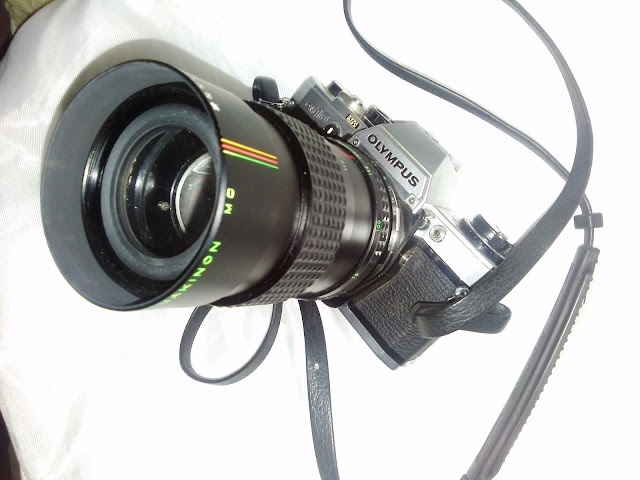
camera sony
Sony has announced a pair of mobile photography camera/lens modules, the QX10 and QX100. Both units are essentially self-contained cameras that can be controlled by smartphones, using Wi-Fi. The QX10 ($250/£179/€199) features a standard compact-camera 1/2.3" sensor and a 25-250mm equivalent zoom lens. The QX100 ($500/£399/€449) uses the 1" sensor and 28-100mm equivalent zoom used in its high-end RX100 II compact. Both are NFC-compliant to make connection to some smartphones even easier.
Although designed primarily for use with smartphones, both modules include their own batteries, memory card slots, zoom controls and shutter buttons, allowing their use remotely from (or entirely unconnected to) a phone.
What does this mean for mobile photography? Check out the links below to read connect.dpreview.com's take on the QX concept, and also a first impressions piece covering both modules and an in-depth look at the higher-end QX100 model.
Jump to:
NEW YORK, Sept. 4, 2013 – Merging the creative power of a premium compact camera with the convenience and connectivity of today’s smartphones, Sony today introduced two “lens-style” QX series cameras that bring new levels of fun and creativity to the mobile photography experience.
The innovative Cyber-shot® QX100 and QX10 models utilize Wi-Fi® connectivity to instantly transform a connected smartphone into a versatile, powerful photographic tool, allowing it to shoot high-quality images and HD videos to rival a premium compact camera. It’s an entirely new and different way for consumers to capture and share memories with friends and family.
With a distinct lens-style shape, the new cameras utilize the latest version of Sony’s PlayMemories Mobile™ application (available for iOS™ and Android™ devices, version 3.1 or higher required) to connect wirelessly to a smartphone, converting the bright, large LCD screen of the phone into a real-time viewfinder with the ability to release the shutter, start/stop movie recordings, and adjust common photographic settings like shooting mode, zoom, Auto Focus area and more.
For added convenience, the app can be activated using NFC one-touch with compatible devices. Once pictures are taken, they are saved directly on both the phone and the camera*, and can be shared instantly via social media or other common mobile applications.
“With the new QX100 and QX10 cameras, we are making it easier for the ever-growing population of ‘mobile photographers’ to capture far superior, higher-quality content without sacrificing the convenience and accessibility of their existing mobile network or the familiar ‘phone-style’ shooting experience that they’ve grown accustomed to,” said Patrick Huang, director of the Cyber-shot business at Sony. “We feel that these new products represent not only an evolution for the digital camera business, but a revolutionin terms of redefining how cameras and smartphones can cooperatively flourish in today’s market.”
The new compact, ultra-portable cameras can be attached to a connected phone with a supplied mechanically adjustable adapter, or can be held separately in hand or even mounted to a tripod while still maintaining all functionality and connectivity with the smartphone. They can also be operated as completely independent cameras if desired, as both the QX100 and QX10 cameras have a shutter release, memory card slot and come with a rechargeable battery.
Premium, Large-Sensor QX100 Camera
The Cyber-shot QX100 camera features a premium, high-quality 1.0 inch, 20.2 MP Exmor® RCMOS sensor. Identical to the sensor found in the acclaimed Cyber-shot RX100 II camera, it allows for exceptionally detailed, ultra-low noise images in all types of lighting conditions, including dimly lit indoor and night scenes.
The sensor is paired with a fast, wide-aperture Carl Zeiss® Vario-Sonnar T* lens with 3.6x optical zoom and a powerful BIONZ® image processor, ensuring beautifully natural, detail-packed still images and HD videos. As an extra refinement, the QX100 sports a dedicated control ring for camera-like adjustment of manual focus and zoom.
Several different shooting modes can be selected while using the QX100 including Program Auto, Aperture Priority, Intelligent Auto and Superior Auto, which automatically recognizes 44 different shooting conditions and adjusts camera settings to suit.
High-Zoom Cyber-shot QX10 model
Boasting a powerful 18.2 effective megapixel Exmor RCMOS sensor and versatile 10x optical zoom Sony G Lens, the Cyber-shot QX10 camera allows mobile photographers to bring distant subjects closer without sacrificing image quality or resolution, a common problem in smartphones. It’s also extremely portable and lightweight - weighing less than 4 oz and measuring about 2.5”X2.5”x1.3”, it’s a great tool for travel photography.
Additionally, the camera has built-in Optical SteadyShot image stabilization to combat camera shake, keeping handheld pictures and videos steady and blur-free. It has Program Auto, Intelligent Auto and Superior Auto modes to choose from, and will be available in two different colors – black and white.
Pricing and Availability
The new Cyber-shot QX100 and QX10 lens-style cameras will available later this month for about $500 and $250, respectively.
The cameras and a range of compatible accessories including a soft carry case and dedicated camera attachment for Sony Mobile phones like the Xperia™ Z can be purchased at Sony retail stores (www.store.sony.com) and other authorized dealers nationwide.
Please visit www.blog.sony.com for a full video preview of the new Sony Cyber-shot QX Series cameras and follow #SonyCamera on Twitter for the latest camera news.






















